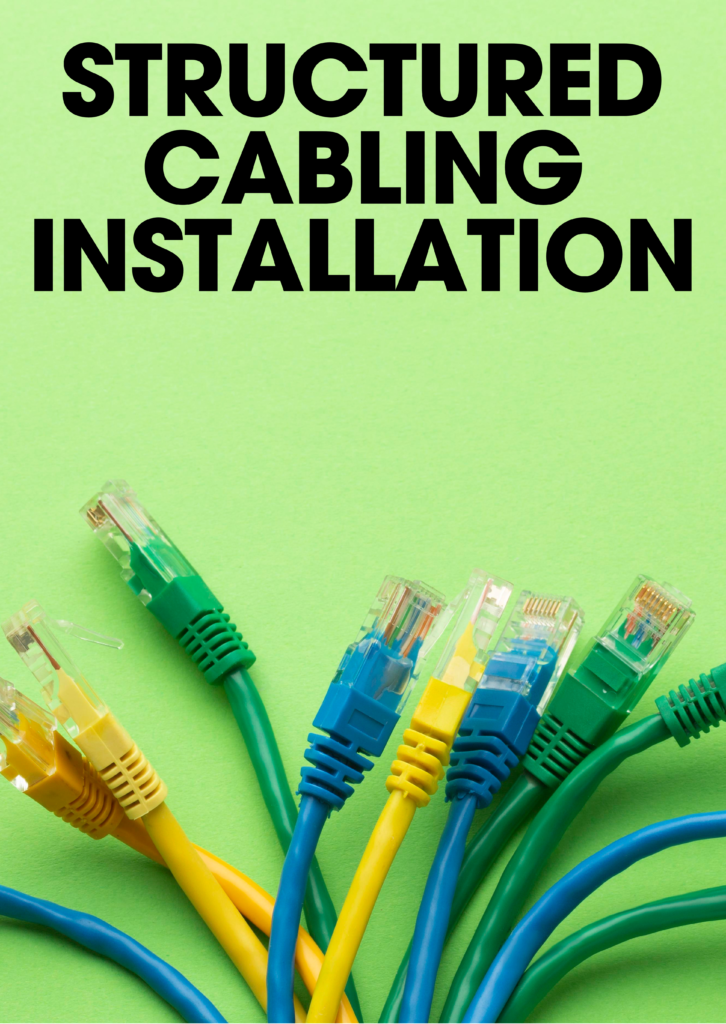
Apr 04 2024
/
Guide to Structured Cabling Installation
In today’s data-driven world, structured cabling is essential for any business, acting as its nervous system by ensuring connectivity and data flow. However, a robust, scalable, and reliable cabling system requires careful planning, meticulous installation, and proper knowledge. This guide is perfect for IT professionals seeking to enhance their skills or business owners aiming to grasp the intricacies of their network’s wiring
What is Structured Cabling?
Before we start, let’s understand structured cabling. Simply put, it’s a universal platform that supports the strategy of an information system. It’s the standard architecture for telecommunications cabling outlined by the EIA/TIA and ISO. The aim is to create a consistent infrastructure that supports various hardware systems and is designed for long-term use.
The Importance of Proper Installation
The advantages of a properly installed structured cabling system are significant. It boosts efficiency, keeps things organized, and makes it easier to troubleshoot. A poorly installed network can cause problems like downtime, slow data transmission, and challenges in scaling to meet business growth.
Planning Your Structured Cabling Installation
Understanding Your Business Needs
The first step in installing a structured cabling system is to understand your business needs. Do you have a small office needing internet and a few workstations, or a large data center? Each situation demands unique planning, considering the number of workstations, data volume, and potential growth.
Choosing the Right Cables and Components
After assessing your needs, choose the right cables and components based on industry standards, current requirements, and plans. Cable categories from Cat 5e to Cat 8 offer different bandwidth capabilities. Select the one that meets your current and future data needs.
Installation Best Practices
Now that the groundwork is laid, it’s time to get into the nitty-gritty of the installation process.
Preparing for Installation
Mark cable routes, know local building codes and secure all permits before installation. Being organized and prepared is essential for a smooth installation process.
Mounting and Supporting Cables
Cables must be supported and secured across your facility for safety, organization, and performance. Use cable trays, J-hooks, and suitable methods to prevent cables from sagging or tangling.
Terminating and Testing
Terminating cables, or fitting connectors to cable ends, is an art. Follow TIA and EIA standards strictly. After termination, use tools like certifiers and verifiers to test each cable, ensuring they meet the expected parameters.
Dealing with Common Installation Challenges
Labeling and Documentation
Labeling cables at both ends and keeping detailed documentation is key for large installations. Good labeling simplifies identifying and tracing cables later.
Handling Cable Management
Cable management is a key challenge in installation, often causing performance problems and complicating network changes or expansions.
Requirements for Electrical Safety
Following electrical safety protocols is essential. Ensure cables are grounded and installations don’t disrupt electrical systems to prevent hazards.
Post-Installation Considerations
Documentation and Maintenance
After installation, maintenance is key. Keep clear, updated documentation of your cabling layout. Accurately document any changes or additions to uphold the system’s integrity.
Scalability and Future-Proofing
Your structured cabling should be scalable and future-proof, capable of managing current data volumes and any anticipated increase. Staying updated with the latest standards and technologies will help you stay ahead.
Conclusion
Structured cabling installation, though complex, is crucial for any business’s functionality. Adhering to industry standards and thorough planning ensures your cabling meets current needs and supports future growth. Whether you’re experienced or new to this, these tips will guide you in creating a streamlined, efficient, and reliable cabling system built to last.
Frequently Asked Questions
What is structured cabling?
Structured cabling is a complete system of cables and related hardware, offering a broad telecommunications infrastructure. It supports various uses, from telephone service to data transmission via computer networks.
Why is structured cabling important?
Structured cabling systems are essential for their reliability and flexibility, adapting easily to network or business changes. They simplify troubleshooting due to their organized and standardized setup.
How often should structured cabling systems be updated?
The need to update structured cabling systems depends on your business’s changing needs and technology advancements. It’s wise to review every five years, but keeping up with tech trends can guide the timing for updates.
Can I do structured cabling installation myself?
While someone with technical experience can install a structured cabling system, hiring professionals is advised. A poorly installed system can cause lower performance, more downtime, and higher long-term costs.
How can I ensure my structured cabling is future-proof?
Future-proof your structured cabling by choosing high-quality cables and components that surpass current standards. Design your system for scalability to meet future tech advancements and business growth.
